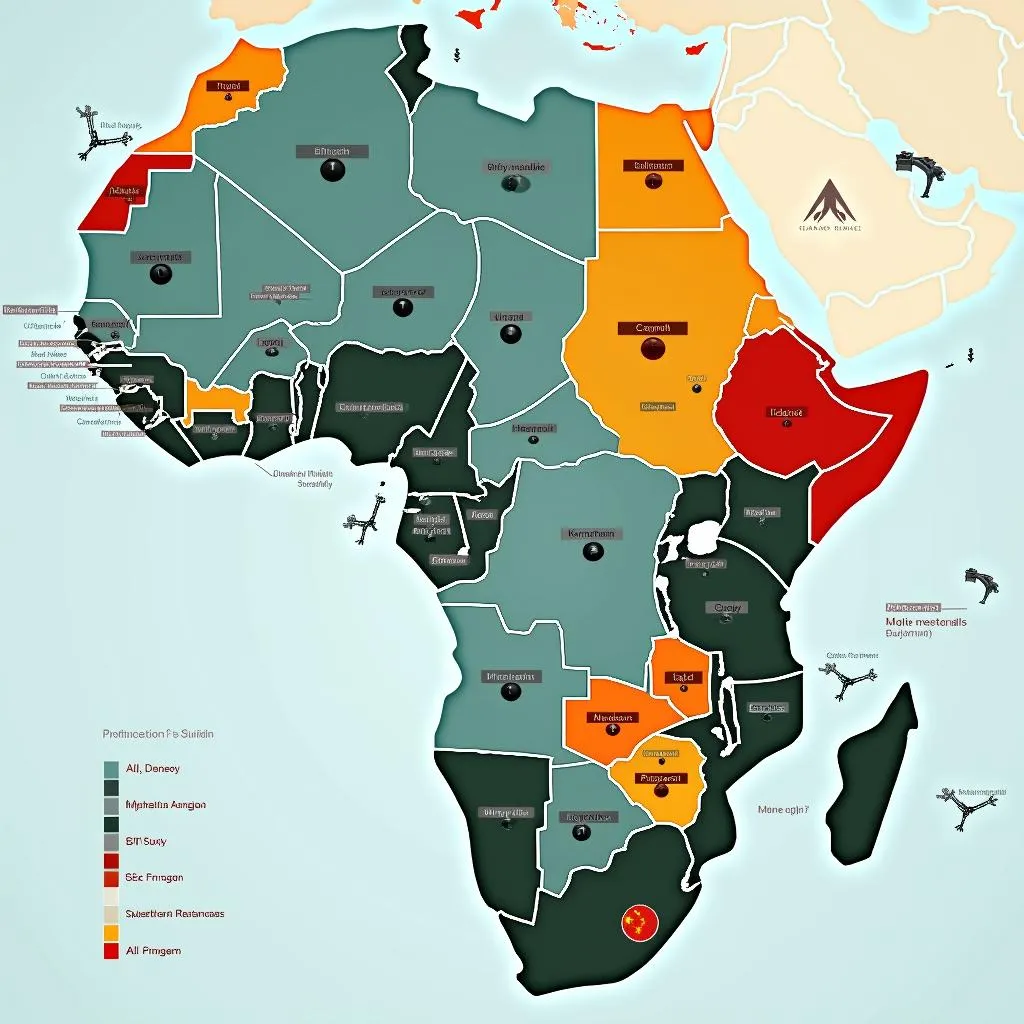The relationship between China and Africa has deepened significantly in the 21st century, marked by substantial Chinese investment in the continent. This has led to a growing discourse surrounding “African Countries Owing China,” prompting concerns about debt sustainability and potential economic vulnerability. This article delves into the intricacies of this debt landscape, examining the reasons behind borrowing, the scale of the debt, and its potential implications.
 Chinese Investment in Africa: A depiction of various projects funded by Chinese loans and investments across different African nations.
Chinese Investment in Africa: A depiction of various projects funded by Chinese loans and investments across different African nations.
Unveiling the Reasons: Why African Countries Borrow from China
African nations borrow from China for several reasons, driven by their developmental needs and China’s willingness to lend.
- Infrastructure Gap: Many African countries face a significant infrastructure deficit, hindering economic growth. Chinese loans offer a way to bridge this gap, funding critical projects like roads, railways, and ports.
- Access to Capital: Securing funding from traditional lenders like the World Bank or IMF often involves stringent conditions. China offers a less conditional approach, making it an attractive option for some African governments.
- Resource-Backed Loans: Some loans are tied to natural resources, with repayment made in oil, minerals, or other commodities. This can be appealing to resource-rich nations seeking quick injections of capital.
Debunking the Myths: The True Scale of African Debt to China
While concerns about a “debt trap” are often voiced, it’s essential to analyze the scale of the debt objectively.
- China’s Share: Contrary to popular belief, China is not the largest creditor to Africa. While holding a significant portion, other creditors like the World Bank, IMF, and private lenders also contribute considerably.
- Debt Sustainability: Debt sustainability varies greatly across the continent. While some countries face challenges managing their debt burden, others have shown resilience and responsible borrowing practices.
- Transparency and Accountability: A lack of transparency in some lending agreements has fueled concerns. However, efforts are underway to improve data collection and promote responsible lending practices.
Navigating the Future: Addressing Challenges and Opportunities
The future of the China-Africa debt landscape depends on proactive measures from both sides.
- Debt Management Strategies: African nations need to prioritize sustainable debt management strategies, focusing on transparent borrowing practices and efficient allocation of funds.
- Economic Diversification: Reducing dependence on raw material exports and fostering economic diversification is crucial for long-term debt sustainability.
- International Cooperation: Collaboration between China, African nations, and other stakeholders is essential to promote responsible lending practices and ensure mutually beneficial outcomes.
The “African china crisis” discourse often overlooks the nuances of this complex relationship. While concerns about debt sustainability are valid and require attention, it’s crucial to move beyond simplistic narratives.
Understanding the diverse motivations for borrowing, the actual scale of debt, and the potential solutions is vital for fostering a balanced and mutually beneficial partnership between China and Africa. The “African Continental Free Trade Agreement and India” adds another layer to this complex dynamic, highlighting the importance of strategic partnerships in Africa’s development journey. Similarly, understanding the “African diaspora definition quizlet” helps contextualize the diverse actors and perspectives shaping this discourse.
Leave a Reply